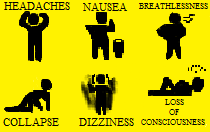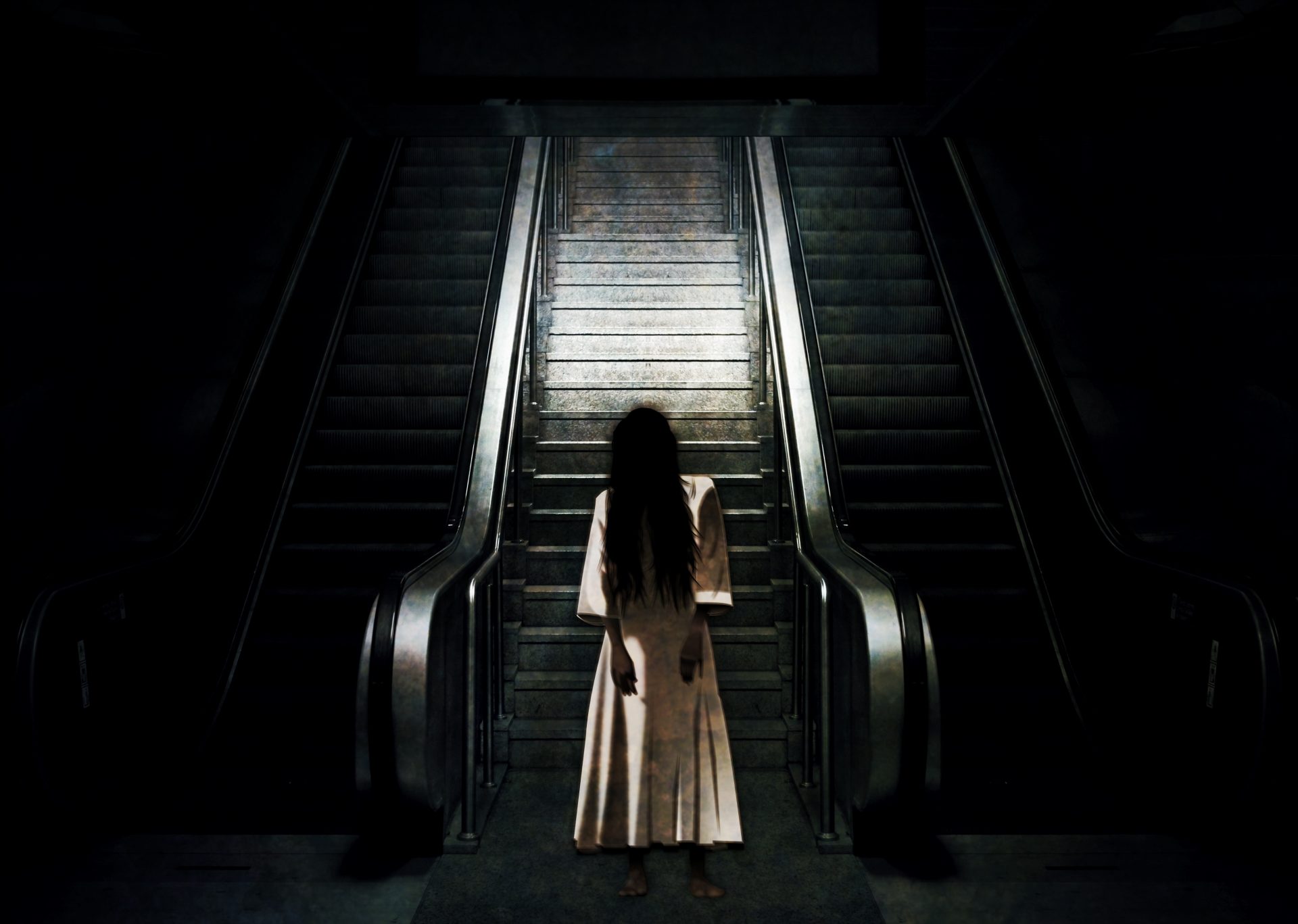The Academy Award winning film ‘The Hurt Locker’ (2008) begins with the following quote: “The Rush of battle is a potent and often lethal addiction, for war is a drug”. This ‘rush’ and addicting excitement described are not restricted to war, of course. It is this same proclivity which made people pack screenings of ‘The Conjuring’ making it one of the biggest blockbusters ever. Although slightly counter intuitive, there is no denying the allure of adrenaline inducing events and stories for many of us. The mystery of the unknown factor is also just too good to miss out. However, what is interesting here is that many prefer to be shrouded in mystery and to remain in a state of perplexity rather than to arrive at a real, yet boring closure. The face of the child drops, the gleam of the eyes disappear when the magician reveals that there was a rabbit hidden in the hat throughout the show. It did not just magically appear from the air after all. Paranormal sightings and ghost stories are also not entirely different. Many would rather believe in the veracity of these tales readily than to dig deeper into them, questioning things with an open mind. It is keeping these things in mind that I share a few ghost stories that I heard last Halloween and some rational explanations that go with it. It is, of course, impossible to demonstrate that the explanations provided are indeed what happened. However, it is my belief that any attempt to invoke the transcendental should only be employed after the exhaustion of natural explanations.
- The Haunted House? – A family moved in to a new house in an isolated part of town. Although there were some rumors that the previous owners had sold the property due to some ‘unexplained experiences’, our protagonists did not mind. If a few individuals’ wild imagination led to bringing down the price of the house making it more affordable for them, all the more reason to rejoice, they thought. However, things began to take a turn for the worse as soon as they moved in. It was first their pet dog, which started acting strange. The poodle would bark for no reason and refused to go to certain areas of the house despite being adventurous. Their usually calm one year old son became more and more irritable as the days went by. The couple also began to feel that something was off. They began to experience numerous strange happenings. Feeling weak and shaky, a tightness of the chest, hearing noises around the house and more, became normal parts of their routine. They tried to dig the stories of their previous owners and found that they had experienced similar things as well, which had triggered them to sell the house in the first place. As they unearthed more and more stories, they heard several rumors that someone who had lived in their house years back had died due to a heart attack in the middle of the night. They realized that the symptoms were perhaps not as random after all. Nevertheless, they always felt better when they stepped out of house. It was as if they were in a different world altogether.

(Possible) Explanation – This is very likely the work of what is known as ‘the silent killer’ – No, not poltergeists, silly. I am of course talking about a colorless, odorless and tasteless gas – Carbon Monoxide (CO). This gas is produced by the incomplete burning of carbon containing fuels and can be emanated from boilers, furnaces, water heaters or fireplaces. Symptoms of CO poisoning include headaches, nausea, dizziness, weakness, confusion and chest pain. Pets or young children are more likely to notice it first. In some cases, this gas can also produce hallucinations in people. It becomes even more potent when all the windows are closed and when there is a restricted amount of air flow. It is for this reason that houses are encouraged to have carbon monoxide detectors to alert the owners if their levels are alarmingly high. Combined with the human imagination, myriads of tales of ghosts can be made with this gas as a sidekick. Due to its ability to deprave the oxygen in our blood, it can cause the brain to function differently causing the person to ‘see or hear things’ and can even kill them in high levels. One way or another, you are in for a chance to meet the ‘paranormal’.

Carbon Monoxide, the ‘Silent Killer’, can cause a wide range of symptoms
- The Nurse’s Midnight Stroll – Hospitals are prime locations for ghost stories, next only to cemeteries, perhaps. The many gruesome deaths that occur here, the wide range of emotions experienced by its inhabitants and the macabre atmosphere that engulfs it all aid on this front. This story takes place at St Mike’s Hospital in Toronto where several patients frequently report that the Ghost of Sister Vinnie does her rounds comforting them on the 7th floor of the building. Sister Vincenza (Sister Vinnie as she was lovingly called) had worked at the hospital from 1928 until around 1956, shortly before she passed away. In the middle of the night, the patients would routinely ask the nurses who the lovely woman, dressed in white, beside their bed was. They would always get the same reply, “No one was in your room”.

Sister Vincenza, right, with a newborn at St. Mike’s in Toronto.
Image Courtesy of St. Michael’s Hospital archives
(A Possible) Explanation – The human mind is biased towards detecting an agency in the surroundings even if it doesn’t really exist. This is mostly due to what has helped our cave-dwelling ancestors in the past. When we once roamed and explored the forests, it is this ability to automatically assume any disturbances as an animated agent that saved us valuable time, increasing our chances of survival. After all, if the rustling in the bushes was just the wind blowing, assuming it was a tiger and running away from it won’t cost the person anything other than some energy. However, if the rustling had in fact been a tiger, assuming that it was the wind could cost their life. The former mindset would thus be preferred on an evolutionary scale and this tendency is what psychologists have termed as the hyperactive agency detection device (HADD) module of the brain. An offshoot of this phenomenon is termed pareidolia, where the mind perceives a familiar pattern for something where it doesn’t actually exist. This is what makes people see the image of Jesus in their sandwich, the face of a person on Mars and what made Hamlet and Polonius converse over clouds in the Shakespearean classic.
St Mike’s, a Catholic institution, is filled with statues, idols and sculptures. The 7th floor of the building is also no exception to this tradition. Around midnight, as the shadows lengthen, it is difficult to differentiate the silhouettes of these lifelike models with that of real people. Under partial sedation or altered states of consciousness, for some inmates, the amalgamation of reality with their imagination is not a strenuous task at all. Having heard of the rich history of the hospital and the numerous legends associated with the place, the specific interpretations of their experiences could also be shaped a certain way subconsciously.
(Left) Pareidolia is when the mind perceives a familiar pattern for something where it doesn’t actually exist (Right) St Mike’s, a Catholic institution, is filled with statues, idols and sculptures in tune with rich Catholic traditions
- Are You Done Yet? – The Ryerson Theatre School Building in Toronto is not new to paranormal stories. Just like any other theatre or performance oriented building, many use the facilities here to hone their imagination and creativity. It is thus not surprising that the building has been host to a variety of unusual experiences and ‘hauntings’. One such incident occurred at the Kerr Hall of the theatre, right next to the intersection of Gerrard and Church Streets. Many students complained that during their rehearsals, the voice of an old lady would suddenly whisper, “Are you done yet?” to them. This occurred even during solo rehearsals when there was clearly no one else around the performer. Needless to say, a bodiless voice asking whether they were done by whispering to their ear in the middle of their involved rehearsals is certainly an unsettling experience. Add to that, the already spooky reputation of the place, and you have Sir Alfred Hitchcock rubbing his hands with glee at the story. When the situation got out of hand, a few paranormal investigators were called in to look into the matter. Out came the voice recorders, the expensive microphones, the video cameras and lights. After listening to hours of the room-tone, the investigators remained as flummoxed as they first were. They couldn’t hear the lady’s voice. However, the students who went in to rehearse after this hunt informed the others that the voice was back.
What (could have) happened – There is a Youtube video named ‘Selective attention test’ that went viral a few years ago (I suggest you watch it before you read any further). The video asks you to keep track of the number of passes the team wearing the white clothes makes. At the end of the video, while revealing the correct answer, the narrator poses a question: “Did you see the gorilla?” A surprised viewer is then informed that during the video, there was someone in a gorilla suit who walked across the screen, even stopping in the middle of it for a full 3 seconds. Due to the task at hand, the viewer, completely glued to the white team and the ball, misses this development and is given a taste of the brain’s selective attention abilities1. This extremely important ability of the brain to completely focus on a particular task, zoning out several others (also called inattentional blindness), without even making us aware about it, has been crucial for our survival. How on earth is all this relevant to the old lady whispering, you may ask. Turns out, it has everything to do with it. Led by the reputation of the room and on the accounts of the witnesses who were mostly immersed in their rehearsals, the investigators tried to find the source of the voice within the room. The cameras, microphones and lights were all aimed at picking up stimuli from within it. Using this strategy, they missed a key part of the puzzle; the fact that the room was next to a busy street intersection. A few conversations with some regulars in the street and nearby shops revealed that there was an old lady, mentally unstable, who walked around the street, yelling “Are You Done Yet?” Although the hall was intended to be soundproof, a combination of the windows being sometimes open for rehearsals, the reputation of the place and a stimulated psyche of the performing artist led to the perpetuation of this legend.
(Left) The Selective Attention Youtube video. (Image courtesy of Daniel Simons, www.dansimons.com) (Right) The Ryerson building is next to a busy street intersection
- The Spooky Performance – The Ryerson theatre in Toronto is once again the setting for this one. Over time, many complained that stepping to a particular corner of the rehearsal room made them feel uneasy and awkward. Several others felt that they saw and felt ghostly blurs in this corner. Although this corner looked rather unremarkable and could not be differentiated from the other ones, such reportings continued and was very specific to that very corner of the room.
(A Possible) Explanation – The culprit in this case was a small boiler which was situated directly under the corner of the room. This boiler, slightly dysfunctional, emitted sounds with a frequency of around 18 Hz. The human ear is capable of hearing sounds within a range of 20-20,000 Hz. Sounds lower than 20 Hz are not usually perceived and is known as infrasound. However, some studies have shown that since this frequency (18 Hz) is very close to the resonant frequency of the human eyeball, it could produce optical illusions or disorientations for the person. This poses an interesting case as although the person cannot hear these sound waves, they can still feel its effects. A famous experiment to test out this hypothesis was performed at the Purcell Room in London. Two concerts were staged back to back, each with multiple music pieces. During both these concerts, sound frequencies of 18 Hz were played at random times while the music was playing. The audience could not hear the sound itself although they could feel its effects. The audience then filled questionnaires on how they felt during various stages of the concert. Not surprisingly, there were high numbers of anxiety, uneasiness, fear and chills down the spine reported when the infrasound was playing. There have been some indications that the presence of infrasound is also what makes a tiger’s roar so menacing. While sounds at such low frequencies cannot be ‘heard’, it can be ‘felt’, which may even cause momentary paralysis for some. When the boiler under the theatre corner was fixed, complaints about the uneasiness subsided as well.
(Left) The human ear is capable of hearing sounds within a range of 20-20,000 Hz (Right) There have been some indications that the presence of infrasound is what makes a tiger’s roar so menacing
It is not difficult to imagine that these stories, and indeed many others, have been told repeatedly in different settings and are thus probably very different from when it was first conveyed, much akin to a game of Chinese whispers. Purposeful modifications to suit the context, memory lapses, hyperboles, and personal biases should also be factored in when hearing such accounts. Although some of these aspects of storytelling are unintentional, some others are meant to serve specific purposes. No one in their right mind, for instance, would question fables and their validity. Certain stories in science are also no exception. Although it is almost certain that an apple did not fall on Newton’s head, what is important there is that it CAN fall and the reason as to why it does? Such stories help us understand abstract concepts easier and facilitate learning. However, the availability of such well meaning stories also presents the risk of blurring out the lines of fact from fiction. What makes it even worse is the propensity of humans to be gullible. Due to the vast amount of resources needed and time lost if one were to ‘fact-check’ every instance, the human mind has evolved to accept many things by default. It is in this context that critical thinking and the ability to question conventions achieve importance.
Yes, I do realize that I may have caused a few faces to drop by having the chutzpah to suggest that the rabbit was in the hat all along. Perhaps my suggestion was wrong and it did indeed magically appear out of thin air. Regardless, if this article makes you think critically and question the next ghost story that you hear, I consider this writing stint a success.
References
- Simons, D. J. & Chabris, C. F. 1999. Gorillas in our midst: Sustained inattentional blindness for dynamic events. 28: 1059-1074.







